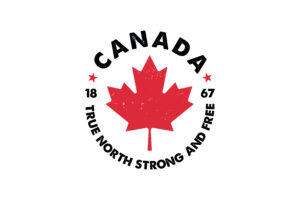Last week, we celebrated the annual World Food Safety Day, acknowledging the need for food standards and their contribution to helping save lives. So, the day has passed, the box is checked, it’s time to move on. That’s all fine – as long as moving on means moving food safety forward by applying best practices every day of every week, month, and year.
While all food businesses must implement food safety practices by law, failing to reassess those practices on a regular basis can get a business into a rut so that areas needing improvement are no longer noticed or attended to. One way to keep your business from falling into that rut is to stay informed of common industry failures and the solutions (e.g., through perusal of FDA’s weekly Warning Letters and TAG’s review of these), then seek out best practices of the industry (such as those required by major customers) for continuous improvement.
Following are a few best practices we’ve compiled from the good (and bad) we’ve seen in our travels and from customer requirements we’ve come across.
- Traceability is currently a major buzz word in the industry, particularly with compliance to the Traceability Rule due in less than three years. While that rule focuses on risk assessments of foods on the Food Traceability List, there are other traceability assessments that are essential to all foods and all businesses. For example, conducting regular vertical tracing and recall simulations is a standard practice of leading companies, but one area often found to be neglected is the validation of contact information. Because companies don’t want to actually notify suppliers, customers, and regulators in a mock recall, the contact information is not checked and may no longer be valid – which can be a major issue in an actual recall. Best practice is to take the time to regularly contact each person on the list (customer and regulatory), not only to ensure it is still accurate, but to determine if response time is sufficient.
- Foreign material control is another area for which most companies have protocols, but don’t always maintain them well. For example, an automatic rejection arm on a conveyor belt may do a great job of pushing non-compliant product off the line, but is that ejected product pushed into a locked container, does the lock work, how often is the container emptied, and who has the authority to do so? If product is simply pushed into an open bin, the lock is not maintained, or if access is not controlled, there is the risk of rejected product being put back in with good product (unintentionally or purposefully). Additionally, if the conveyor does not stop when product is rejected and no regular assessment of cause is conducted, you can end up with a recall of a great deal of product because there was no hard stop.
- Environmental Monitoring Programs (EMP) – The monitoring of environmental conditions where they could reasonably be expected to cause contamination or cross-contamination is required by CFR 21. But simply swabbing surfaces and documenting results is only half the picture. Not only is it critical to then implement corrective actions and controls, but best practice (and a GFSI requirement) is to maintain a trend analysis report. Not only should the analysis show the testing trends, but it should also record the effectiveness of your sanitation validation, and all data should be reviewed and analyzed regularly to detect trends before major issues develop. Within your EMP, attention also should be paid to the sampling plan. If sampling is conducted by an internal team, all should be trained on the proper sampling procedures. We’ve seen cases where the team causes contamination to the sample due to incorrect processes. As a final word on environmental monitoring, it is critical to understand that a visual inspection of cleanliness is not enough; rather, sanitation must be verified through a robust monitoring plan.
Seeking out best practices is important to ensuring your food safety program is continually improved to truly keep your food safe. But the best of best practices does little good if workers are not trained, continuously apply good practices, and even make suggestions themselves. To encourage this, many companies implement recognition programs, rewarding workers when they are “caught doing something right.” Whether rewarded through gift cards, a recognition wall, parking spot of the month, or team BBQ, a bit of recognition can go a long way in ensuring worker focus on food safety, and can be instrumental in building and maintaining a plant- or company-wide food safety culture.





